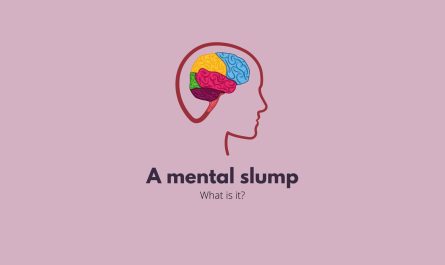It has been a crazy week and lots of wonderful people have been asking me about photographs. How to use their camera for this and that, lighting, can I photograph them? Etc.
I love Photographs I think whether we are conscious of it or not we all empathise with imagery in one way or another just like we do with writing and when we publish we want people to empathise with the content. If you are struggling with how to gain that empathy from your audience then you need to read “Inside the Blogger: Transferring Emotion by Luca Kramis”
I will cover other Image-based thinking in later posts but the one thing that links all of this is……….. the permission to publish.
It’ can be a daunting subject, so I am just going to cover “the use of Images” today. In the end, you will have some Short explanations of key terms you may not understand about Intellectual Property.
There are so many different rules on copyright, licence, right to publish, the context of usage. The list is endless. Different countries have varying laws depending on where you are publishing an image and what you are using it for. This includes the context of the subject (most people don’t even think about this!).
Get it wrong and it could end up being very expensive!
So #haveabrew to hand because this subject is on par with Vogon poetry!
This stuff can get really boring and could take the passion out of what you are doing, but, if you know about it now then you can plan better for future content creation and re-establish your passionate bloggings! Legally!
Just to be clear, this subject applies to everyone publishing content, I do mean everyone!
Also, I recommend looking at the explanations at the end if you want links to Swiss, EU, USA and worldwide Intellectual property sites that are kept up to date!
Here is the summary of what will be covered:
- Who owns Copyright?
- Image licencing: Licence types, the main models
- When Free does not mean free!
- Using your own Images: Is it mine? Yes but no!
- Using a photo of friends: getting permission is essential!
- Some Explanations of key terms in Intellectual property
Who owns Copyright?
With photographs and Illustrations, the copyright generally is owned by the creator or institute/company that produced it.
If you independently create an original photograph then you can copy and distribute or display it without fear of someone chasing you for a royalty payment for using it (The content of that photograph can be more complicated, see “Using my own Images: Is it mine? Yes but no!”).
Distributing Images
When images are distributed they are distributed with a licence to use the image. The licence is the setting out of terms covering: how, where and in what volume the image can be used and what is expected in return!
Image Licencing Models
There are so many models nowadays. You must choose the licence and distributor that covers your needs. Each one will be slightly different but they all derive from the following models
Rights-Managed (RM) licence
Copyright owners earn Royalties based on a “per use” basis
This is the oldest Type of photographic licence. RM controls the use of an Image, everything about the usage of the image, is controlled and the price varies accordingly. A History of use will be kept by the distributor so that publishers are aware of the previous usage an Image has had in the past. This can help with avoiding issues such as brand confusion (click here for possibly the most famous case).
Most of the time for a blogger this will not be the type of Image licence that makes financial or time-saving sense you use, if the photograph is newsworthy you may want to use it exclusively for a period, often with this type of licence this is possible but at a cost!
When “Free” Does not mean its free!
The Royalty free (RF) Licence
The licence that made “the everywhere girl” famous
With RF Copyright owners earn money by someone buying the image and licence to use it in one easy transaction, this is limited to use(display) but not to distribute(re-sell or in some cases physically distribute).
Do not be fooled by this Licence’s name. The word free refers to the royalties that the copyright owner is not continually earning by repeated use like they do with RM Images.
A short history of RF
This Licence came about at the end of the 20th Century because of large library’s needing to make images easier to manage and quicker to use as digital media (CD Archives and then Online Libraries) popularity grew faster than libraries could distribute, and the number of images being created exploded! Guess What…. They got cheaper as well!
Owning an image with a royalty-free licence is not the same as copyright ownership! People often do not know the difference, but it does not limit your number of uses (normally) if publishing, but it does restrict it being used in products that will be resold. Usually, you will buy an image that is a certain size and the size you have is your limitation bar the redistribution. So, for digital use this became the licence of choice for many publishers, even news publishers use RF libraries for less specific illustrations to save money.
Extended/enhanced Licences
For the majority, these will just be relevant for high distribution and volume users, if you are blogging most will not consider them a necessity. They change a lot from place to place. If you come across one and are short on time #haveabrew and find another image!
Creative Commons
There are other licences like Creative Commons, there are 6 different creative commons licences and you should always check which one applies and the current terms of that licence Click Here for help finding the correct Creative Commons licence for you in this easy calculator. Some are no cost(this still does not mean FREE, but it depends on the use, so check! In most cases, the minimum ”not free aspect” is the credit you give for that Image. Let’s be honest that is a small price to pay! This can be a safe way for bloggers to find images at little or no cost!
You can search lots of creative commons libraries from here
What to do If the Licence is not clearly shown? ask for permission! it is not the copyright owners problem, they still own the copyright and could still sue you if you steal it!
This Link will give you a guide to obtaining permission to publish copyrighted content.
If for some strange reason you think you will get away with it, you are wrong! picscout was one of the first companies to bring a solution for this to the “webtable” their Api was originally for just this reason!
Using your own Photos: Is it mine? Yes but no!
Most of the time you will not have to worry about using your own photos, but this depends on the content and the type of use you intend it to have.
So, you have gone to the trouble of creating your own photograph (well done, don’t give up), but what else might affect me distributing or publishing it?
What to watch out for: Property and Model Release
You may need permissions!
Property
If you have photographed a recognisable piece of property (includes intellectual property) you will likely need permission from the property owner. Basically, if you don’t own it be it: Commercial interest(IE.trademarks), national parks (in some countries), Landmarks. Get permission!
For example, you photograph a church, to be safe (some landmarks do have legal teams set up for dealing with this) you should contact the church attaching the image and explaining your intended use of your photo. The church does not own the copyright of the photograph, but they can control the use of the image of the church. WHY? Basically, a church is like a Brand it has representative values, you are using an image of the church in a certain context which could defame those values (you may not even be aware you are doing it!). So, get permission Here is a link to a Property Release form from Almay Stock library , you will need your own one, this one assumes your images are going on the Alamy Platform. You can add a property release form when seeking permissions
Models
Example:
You Photograph your friend to show off your newly designed outfit, but you can clearly see in the photograph that it is your friend. Your friend has probably said they would love to be in the feature. But you should get a model release form signed by them. Why? Because people change their minds and that can get messy! A model release form proves you had permission to use their image (depiction of them).
Here is the standard Model release form from the Stock library Alamy They have their own but they are usually very similar to this one. Again you will need your own so head over here for a free template of a model release and a better understanding of how to use them.
WIPO have a downloadable guide to help Photographers work out if they need Permissions you can get the download here
Some Explanations of key terms in Intellectual property
What is Intellectual Property?
Intellectual property (IP) refers to creations of the mind, such as inventions; literary and artistic works; designs; and symbols, names and images used in commerce. Ref. WIPO
Copyright AKA:Copr, ©:
Copyright is a protection of intellectual property covering works of art.
For example, Coca Cola has a well-known logo, only Coca Cola can claim that the logo belongs to them. Because Coca Cola owns the copyright (right to copy) of that logo this allowed them to have it as a registered trademark ™.
Swiss copyright, USA copyright, EU copyright
Trademarks AKA. Trade marks/ ™ :
Basically, all countries define trademarks in varying ways but the gist of it is: A Trademark is a sign that is used in trade to identify a product or service from other products or services, basically, Brands!
Further reading on the various takes on Trademarks/Trade marks from different countries
In the USA , In the EU, In Switzerland
It is worth noting: In some countries, you can also get protection even if your trade mark is not registered
AND MOST IMPORTANTLY
VOGON POETRY!
The third worst poetry in the universe is written by Vogons and frequently used as a form of torture. It’s on The BBC it must be true!




Hey Tom, thanks for the very useful post. I often get confused on this matter and I think I will print your guideline out, so to have it always with me.
One question: If you find a picture that got viral and you cannot find the owner of this picture, what do you do? I would have included beneath the picture the source from where I took it, but would this be enough? Or you recommend to look for another alternative?
Cool post tom! Doesn’t really make life easier in the short run, but will be helpful in the long run 😉
What do you need for the short term i can try and put something together! did you read the copyright radar? https://blog.hslu.ch/majorobm/2019/03/01/inside-blogger-author-image-want-use/